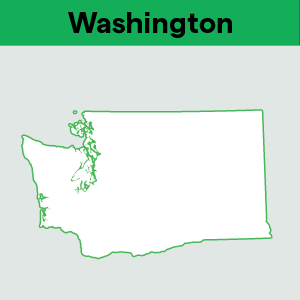What you need to go from Series A to IPO
by September 27, 2024
Shoring up the company’s books in preparation of an IPO is no easy feat — and, actually, the compliance strategies you need to employ are relevant no matter what stage your company is in, whether you’re a startup or mature enterprise business. The earlier you begin implementing these strategies, the more prepared your company will be to take advantage of opportunities that come your way.
1. Understand nexus
In the US retailers are required to collect sales tax from buyers in states where they have “sales tax nexus.” All states have a slightly different definition of nexus, but most of the time states consider that a “physical presence” or “economic connection” creates nexus. You only have to charge sales tax in the states in which you have sales tax nexus.The following business activities may create nexus:
- Having an office, store or other location in a state (even a home office)
- Having an employee, salesperson, contractor, etc. in a state
- Owning a warehouse or storage facility in a state
- Storing inventory in a state (such as in an Amazon FBA warehouses or other 3rd party fulfillment center)
- Having a 3rd party affiliate in a state
- Temporarily doing physical business in a state for a limited amount of time, such as at a trade show or craft fair
There are two different types of sales tax nexus, or in other words, two different ways you can meet the requirements to collect and remit sales tax to a state. Physical nexus is just that, a physical connection to a state. For example, employees, office, conference attendance, warehouse, servers, etc. Then there is economic nexus. This is a state defined amount of sales — either revenue based and/or transaction threshold within a state. So you might have sales tax nexus in a state that you’ve never stepped foot in, but have done a certain amount of sales or transactions in.
Understanding where you have nexus is crucial to being sales tax compliant, and therefore, crucial for a company in a high-growth stage. The first step after determining where you have nexus is registering for sales tax permits in those states. You cannot legally collect sales tax until you register for a sales tax permit.
2. Prepare for compliance changes
The world of taxability is constantly evolving — and it’s up to you to ensure that you are staying on top of these changes. Changes can come from both the state and federal level, but also as your company grows and adapts. For example, you need to be aware of when you are approaching nexus in a new state to ensure you stay compliant within that state. This could mean a regular review of sales in key jurisdictions.
Another example is new employees or a new office location. As we talked about above, having employees in a new state could trigger nexus. Especially as the pandemic forced more remote work, financial leaders will need to be diligent on where their employees are working from and the nexus laws in those states.
Lastly — these changes often come from the states themselves. One example is the taxability of digital goods. In the past, states weren’t sure how to handle sales tax and non-physical items like software. But after seeing the digital transformation and the rise of these types of goods, states are starting to enact more sales tax laws that tax these types of products. That’s just one example of how legislative changes can make sales tax compliance a headache.
3. Automate ahead of growth
Being in a high-growth stage means you are likely too busy to manage this ever-changing world of sales tax. Even for companies not yet in the growth stage, it’s often too complex to manage manually. The good news? There is a way to get help with compliance so it doesn’t distract you from getting your company to the next level.
The answer is automation. There are a plethora of sales tax automation softwares available to streamline this process. A study from TaxJar shows that 70% of finance leaders use automation software to be more efficient. And 64% who use automation feel more confident & prepared.
As you prepare to grow to the next stage, it might be time to ask yourself, “Are you using automation and technology to reduce manual work and potential errors in your compliance processes?” If not, it might be time to evaluate sales tax automation software solutions. You should be looking for features like: system reliability and security, up-to-date sales tax rates, easy to use reporting, automated filings, excellent customer support, and nexus threshold indicators.
With great growth comes greater sales tax responsibility
We are sales tax nerds so we can say things like that. But in all seriousness – preparing your company to go to the next level is a lot of work, with a lot of items on the to-do list. It’s important to make sure sales tax compliance gets crossed off. It all starts with understanding where you have sales tax responsibilities. Then create a strategy for how to manage compliance changes, whether they are new taxability laws or nexus triggers. Finally, automate. Take the manual work out of being sales tax compliance and utilize the technology tools and sales tax experts to ease the burden of compliance.
Ready to talk sales tax automation? Find a time to chat with our sales team here.








